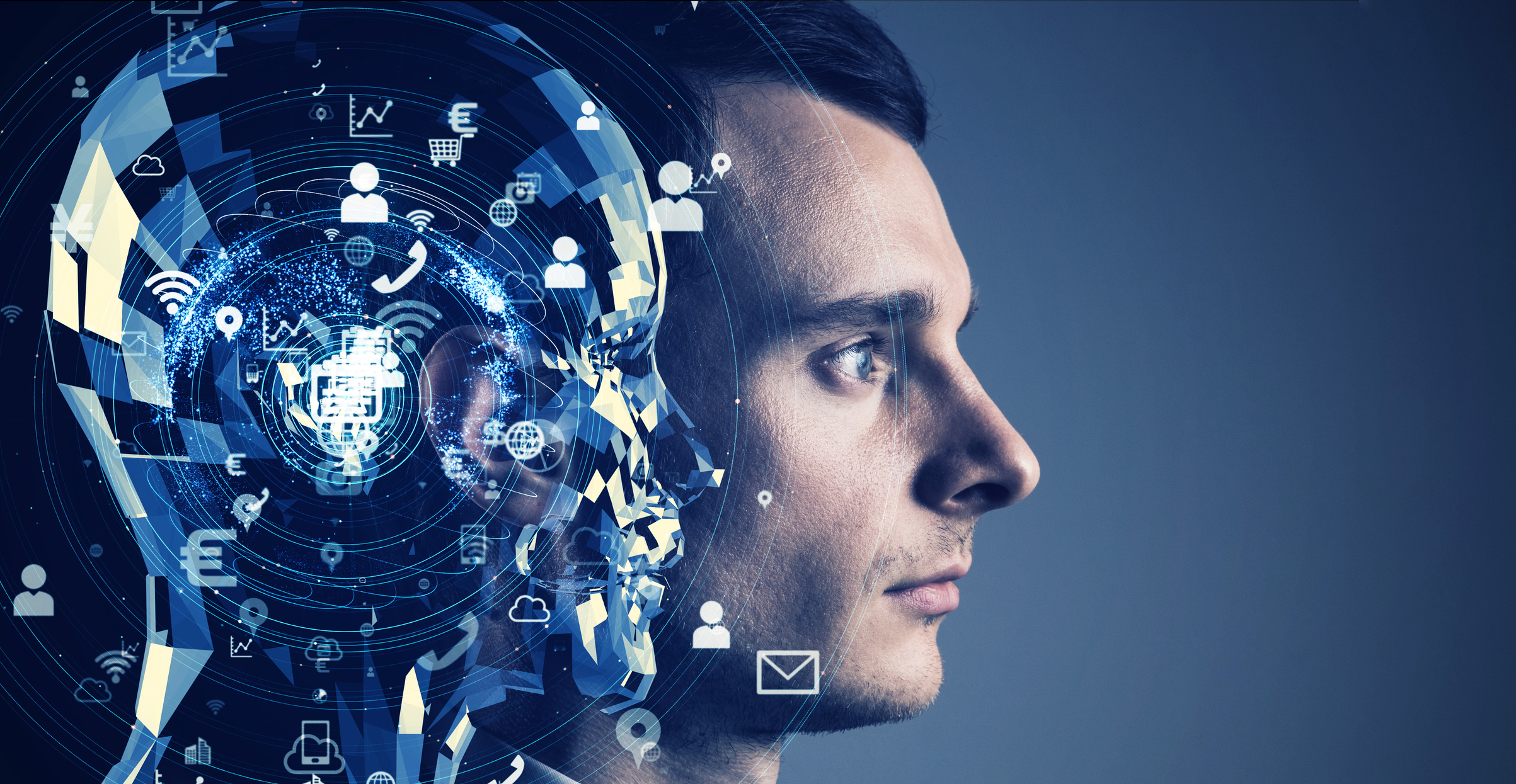By Kari Zeller (FKA Granger)
Major General Phillip Sheridan, the man tasked with forcing Native Americans off the Great Plains and onto reservations in the 1860s and ’70s, knew the indigenous people’s lives and civilization revolved around the buffalo. His strategy—exterminate the bison first—ended their traditional way of living in about a couple of decades.1 Plenty Coups, chief of the Apsáalooke (Crow) tribe, is reported to have remarked that, after the buffalo disappeared from the American plains, “Nothing happened.” It wasn’t that the Crow people stopped existing, it was that they stopped living. Their way of being in the world suddenly became empty and meaningless.
The next 20 years may end up being just as topsy-turvy and fraught with existential risk for all of us as the 1860s was for the Crow. From what I can tell, we are either solving our world’s most intractable issues and raising the quality of life for all or losing what is most precious to us.
I just wonder…what is our buffalo?
In this second article of our series exploring what it means to be human in this AI-driven epoch, we look at the opportunity and vulnerability of an aging population combined with the rise of exponential technology, and why this is a bigger deal than just “adding automation.”
The Disappearing Workforce
Our world is very much in flux.
Over the past few decades, you’ve probably seen the stats related to the world’s aging population. In 2018, the number of people on the planet over 65 surpassed the number of children under 5. By next year, 25% of U.S. workers will be over 55. The problem, as I understand it after seeing a presentation by Anthill founder Muriel Clauson-Closs, is that by 2030 we will have a global shortage of 85 million workers.2
However, it is more nuanced than that. To really understand the problem, we need to break down this projected shortage into those who work at a desk and those who do not. Currently, desk-bound workers only represent 20% of the global workforce. Deskless workers make up the other 80%.
Now run the numbers.
Twenty percent (20%) of the 85M labor shortfall is 17 million unfilled desk-bound jobs. Eighty percent (80%) of 85M is 68 million unfilled deskless jobs in hospitals, restaurants, airports, roadways, retail stores, factories and farms in countries across the planet.
Compound this with where the money is. The vast majority of the estimated $12 billion VC dollars invested recently in Human Resources solutions (99% in fact) has gone to desk-bound workers—while only 1% ($10M) of those billions have been directed towards deskless workers.
Now that is concerning.
Since learning about this labor shortfall, I can’t unsee how many deskless workers I rely on every day. Take the first three hours of today: I grabbed my coffee from a cheery drive-thru barista, drove past construction workers widening our local highway on my way to the airport, got moved through security by cynical but funny TSA screeners, was served breakfast by a young ambitious server in the airport restaurant, watched baggage handlers joke with each other while loading my aircraft, and got my third coffee from a rule-abiding flight attendant. My quality of life is very dependent on the shrinking deskless workforce.
The obvious shift is to put more money into automating or augmenting those 68 million unfilled deskless jobs to keep our world running. Yet, there is something to be said for all these human connection points. As someone who works from home, there are days in which my only real human interaction comes from such workers. And, I enjoy it.
What would it be like if all these jobs were automated? Once I got past the novelty of being served by a robot in my mountain town sushi restaurant, I realized I enjoy being served by a human (robot kitty’s “Happy Birthday” song made me cringe). My experience as a consumer isn’t impacted by a robot shelving products or cleaning dishes, but I find I have a strong preference to interact with another human when I need help finding things or making choices.
Historical Workforce Solutions
In the past, human civilizations have had two basic solutions to labor shortages, one dark and one not-so-dark.
Warfare between nations has always been—and still is—a brutal means to acquire resources and people. Russian enterprises, particularly in manufacturing, industrial, water supply, mining, and transportation, are now experiencing their highest level of labor shortages in 25 years.3 In Ukraine, almost 15 million are displaced or refugees and, depending on whose numbers you believe, several thousand or several hundred thousand minors have been kidnapped and put up for adoption in Russia to integrate into that country’s aging workforce.4
Innovation offers us the brighter possibility of redistributing work, even changing its very nature. Over millennia, we have invented new technologies, tools, and practices that evolved our species from being hunter-gatherers to farmers to industrialists to information technologists. Today, the World Economic Forum is estimating that, in the next two years, artificial intelligence (AI) and automation will create “at least 12 million more jobs than they eliminate.”5 Hopefully, with the convergence of virtual and augmented reality (VR/AR), quantum computing, blockchain, the Internet of Things (IoT), and machines with AI, some deskless human workers will gain access to new “superpowers.” We have the opportunity (and will need) to put AI-augmented robots into jobs we humans don’t want to do, to fill that yawning gap in our deskless workforce.
Either solution—talent acquisition by warfare or an AI-augmented workforce—demands we take a minute to understand what humans bring to work beyond task completion. Roombas in hotel rooms, just-walk-out shopping at retail stores, smart robots replacing warehouse inventory, and large industrial robotic arms in factories are just the beginning. Competitive advantage will come from correctly distinguishing where “being human” matters—and where it doesn’t—in all the processes and practices of an enterprise, and then investing appropriately in the right tools and the right talent.
Get this redeployment of human labor right and we could have utopia. Get it wrong and we risk losing the best of humanity for the sake of “getting the job done.”
Which has me wonder, what if our “buffalo” is our humanity?
AI is already doing existential harm. As Vice President Kamala Harris said recently, “When a senior is kicked off his health care plan because of a faulty A.I. algorithm, is that not existential for him? When a woman is threatened by an abusive partner with explicit deep fake photographs, is that not existential for her? When a young father is wrongfully imprisoned because of biased A.I. facial recognition is that not existential for his family? And when people around the world cannot discern fact from fiction because of a flood of AI enabled mis- and disinformation, I ask, is that not existential for democracy?”6 The more I think about where AI has been applied to the workings of our society, the more I worry about the risks we are taking by letting it exist out “in the wild,” without constraints.
I’m not an ostrich. I’m a truth-teller who doesn’t shy away from very uncomfortable conversations with my clients, colleagues, and peers, especially if those conversations are exactly what’s needed. My company has built its reputation on waking executives up to their blindness, on helping them deal with the consequences of new sight, and on choosing what to do now that they see what they see. In times like these, I believe there is little value in thinking and speaking in normal, comfortable ways about business and leadership.
I’m also not Chicken Little. The purpose of this series is not to say the “sky is falling.” Rather, it is to recognize that our civilization is definitely in a transition period, a time in human history in which we’re concluding the previous era and, hopefully, starting to consciously create the next. When it comes to navigating through the unknowns of this never-seen-before transition, the “stick-our-heads-in-the-sand-and-hope-everything-will-turn-out-okay” strategy has enormous risk. The more aware we are as we go into it, the better off we will be on the other end.
Circumstantial Change Sparks Psychological Transitions
Every big circumstantial change has an equally big psychological transition for the humans going through it. And while change goes from start to end, every transition begins with an ending and is followed by a new beginning. In addition, every transition features an important “empty” time in between that ending and that beginning.7 That fallow period, during which it appears very little or nothing is happening, is like the grand pause in a play, the critical moments that allow people to reflect on and integrate what has happened, before they shift from the old story to the new.7
Back in the nineteenth century, members of the Crow Nation weren’t granted a grand pause in which they could redistribute materials, knowledge, and ways of life into a new identity. One day, they were living their traditional nomadic way of life; the next they were living on reservations. We in the twenty-first century can take their experience as a warning. The disappearance of traditional roles, much like the vanishing buffalo for the Crow Nation, signals a profound transformation in how we perceive and value work.
To better equip ourselves, we can begin to do the psychological work of transitioning for ourselves and our organizations. For ourselves, we can:
- First, acknowledge we are at the end of an era in which our taken for granted reality and identity are about to change in major and minor ways;
- Second, understand what’s happening (distinguish fact from fiction);
- Third, cultivate a mood of curiosity and acceptance as we contemplate what ways of life and what ways of knowing ourselves may be coming to an end;
- And last, but not least, begin to explore what new ways of living, working, and relating might feel meaningful in a world in which we co-exist with AI. (How might your reason for being, your purpose, get expressed in this new era?)
Preparing Our Organizations
I believe it is possible to create the conditions in which we can collaborate with our new technology “peer” to solve many of humanity’s persistent global challenges, including our pending labor shortages. I also believe we can do that in a way that elevates the experience of those who do the jobs no one else wants to do. There is tremendous impact and wealth to be created here.
To begin:
- Actively engage with AI and automation technologies to understand their capabilities and limitations. Full automation does not necessarily decrease labor; however, effective augmentation that enhances—not replaces—humans can reduce labor requirements and leave an existing workforce happier and safer (read retention!). 8
- Identify where the irreplaceable value of human interaction and creativity is necessary—and where it is not. Where the human touch is paramount or competitively advantageous, prioritize investing in people, training, and development. And do the things you know to do that have your people want to stay (that is, give them a voice, make sure they can get help, increase their safety, help them grow skills, give them opportunity, ensure they belong, etc.).
- Prepare and involve desk-bound and deskless workers in how their job in your organization might evolve over the next decade. Develop strategies that include creating pathways for both types of workers to transition into roles augmented by AI and technology.
When I asked my GPT consultant (augmentation) what it thought about this article, it said, “The future of work is not just about filling gaps with robots or AI. It’s about understanding where the human element is irreplaceable—in creativity, empathy, and decision-making. As leaders, our challenge is to blend technology with the unique strengths of human workers, creating a synergy that propels our organizations forward. The future will belong to those who can navigate this new landscape with agility and foresight. By understanding the nuances of AI integration and valuing the human elements of our workforce, we can create a future where technology and humanity coexist in a mutually beneficial ecosystem. Let’s not just adapt to change; let’s shape it to harness the full potential of our collective human and technological capabilities.”
Not bad! I could almost use this as a conclusion. I would cut the last rah-rah sentence and make it a little less esoteric. However, while the prose is perfect, I find its response still lacks something authentic…something human.
___
NOTES
1 https://en.wikipedia.org/wiki/Philip_Sheridan
- Weston Pippin, “Kill Every Buffalo You Can! Every Buffalo Dead Is an Indian Gone”, The Atlantic, May 13, 2016. Accessed November 1, 2023 at https://www.theatlantic.com/national/archive/2016/05/the-buffalo-killers/482349/.
2 “In 2018, for the first time in history, persons aged 65 or above outnumbered children under five years of age globally.” United Nations website. Accessed November 14 at https://bit.ly/3MJxxfU.
“Older workers will exceed a quarter of the workforce by 2031.” Bain & Co study. Accessed November 14 at https://www.bain.com/insights/better-with-age-the-rising-importance-of-older-workers/.
“…salaried office workers represent only about a fifth of the global workforce.” Deborah Lovich, “Deskless Workers Also Want and Deserve More Flexibility”, Forbes, October 19, 2022. Accessed November 14, 2023 at https://www.forbes.com/sites/deborahlovich/2022/10/19/deskless-workers-also-want-and-deserve-more-flexibility/?sh=bcdb2d6f641d.
“In 2021, more than $12 billion in venture capital poured into the HR technology market.” Nithya Vaduganathan, “The $12 Billion Opportunity in HR Technology”, BCG website. Accessed November 14, 2023 at https://www.bcg.com/publications/2022/billion-dollar-opportunity-in-hr-technology.
“An extensive new Korn Ferry report finds that by 2030, more than 85 million jobs could go unfilled because there aren’t enough skilled people to take them.” Michael Francine, “The $8.5 Trillion Talent Shortage”, Korn Ferry Insights, https://www.kornferry.com/insights/this-week-in-leadership/talent-crunch-future-of-work.
CB Insights: State of Venture Capital Report Q3 2022. See https://bit.ly/3SG39qA.
3 “The labor shortage in Russia has reached a 25-year record”, The Moscow Times, April 25, 2023. https://www.moscowtimes.ru/2023/04/25/defitsit-rabochih-ruk-v-rossii-dostig-rekorda-za-25-let-a41030.
4 Peter Zeihan, “Ukraine War Q&A: Who Started This Whole Thing?”, Zeihan on Geopolitics. https://zeihan.com/ukraine-war-qa-series-who-really-started-this-whole-thing-2/.
5 Blake Moret, “Can automation pull us through the global labour shortage?”, World Economic Forum, January 5, 2023. https://www.weforum.org/agenda/2023/01/how-automation-will-pull-us-through-the-labour-shortage-davos23/.
6 Erica L. Green, “Existential Harm From A.I.? It’s Already Here, Says Harris”, New York Times, November 1, 2023. https://www.nytimes.com/2023/11/01/us/politics/kamala-harris-ai.html.
Julia Shapero, “Harris unveils steps to curb AI risks”, The Hill, November 1, 2023. https://thehill.com/policy/technology/4287355-harris-unveils-steps-to-curb-ai-risks/.
7 William Bridges. Transitions: Making Sense of Life’s Changes (New York, Da Capo: 2019) and Managing Transitions: Making the Most of Change (New York, Da Capo: 2017).
8 Muriel Clauson-Closs. Future of Work. Lecture, October 5, 2023. Singularity Executive Program, Palo Alto, CA.


